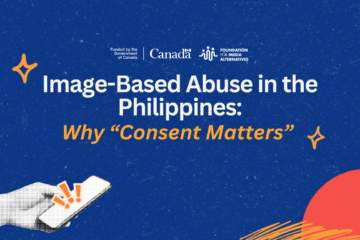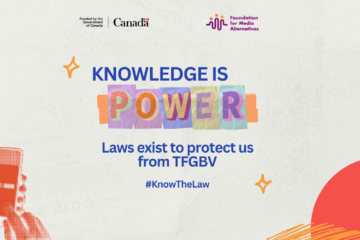Your info, their weapon: How doxxing targets women first
“I never used to think twice about what I posted online—until I saw someone like me get doxxed. Her address, phone number, even her family’s photos were spread by strangers just because she spoke out.”
In today’s digital world, our personal information such as our names, locations, even the people we love can be turned against us. Doxxing is one of the most chilling forms of online abuse. It happens when someone discloses your private details such as your home address, job, and contact info without consent. Usually done to scare and intimidate a person, doxxing can bring an online conflict to the physical world. While anyone can be doxxed, it is women who are most often targeted, especially when they speak up, take space, or challenge power. This gendered dimension of doxxing is why confronting it is an urgent feminist act.
What is doxxing?
The term “doxxing” originates from “dropping documents,” or “docs,” on someone releasing documents that identify them. Today, it often entails combing through public databases, hacking private accounts, or weaponizing seemingly innocuous information (like photos, old posts, or metadata) to piece together a person’s location, identity, and life details. These pieces of information are then used to silence, shame, punish, or incite mobs against a person.
For women, particularly those who question patriarchal norms such as journalists, activists, and LGBTQ+ advocates, the consequences can be terrifying. Doxxing can manifest as stalkers showing up at their door; coordinated rape threats; attacks on family members; or, being forced to leave their homes or jobs.
Why is doxxing a woman’s issue?
Research by groups like Amnesty International and the World Wide Web Foundation shows that women, particularly women of color, queer women, disabled women, and politically active women, are disproportionately targeted in coordinated misogynistic attacks. The more visibly a woman challenges systems of power, the more frequent and intense she is harassed. Doxxing, in a way, functions as a tool of patriarchal control much like street harassment in offline spaces. It seeks to drive women out of digital spaces through fear, shame, and threat. It is a form of digital gatekeeping that polices women’s presence, silences dissent, and makes participation in public discourse feel like a dangerous act. Feminist scholar Anita Sarkeesian, who asserted that women’s representation on video campaigns must be more complex than just mere damsels in distress, had her address published on social media platforms, forcing her to move out.
What can be done?
Addressing doxxing requires a holistic feminist response. First, legal reform and recognition are crucial. Many legal systems still fail to treat doxxing as a distinct offense, often reducing it to a data breach issue. Feminist digital rights advocates are pushing for laws that acknowledge doxxing as a gendered harm comparable to stalking or psychological violence with serious real-world consequences. Equally important is platform accountability. Tech companies frequently delay or dismiss reports of doxxing, leaving targets vulnerable. Feminist groups have long demanded stronger content moderation policies, faster takedowns, and platform designs that center user safety over profit. Alongside these, digital security must be seen as both self and collective care. Feminist communities are increasingly teaching practices like threat modeling, securing personal data, and creating response plans not just as tech skills, but as acts of political resistance that protect care networks. Finally, solidarity and counterpower are vital. One of the most powerful tools against doxxing is community: people stepping in to report content, offer legal aid, provide shelter, or help clean up digital traces. Feminist counterpower is built on the principle that no one should have to face this violence alone.
To frame doxxing as “just” a digital problem misses its roots in gendered power and structural violence. It is a form of technological patriarchy that seeks to punish women for being visible and vocal about what is happening around her.
Sources & Further Reading
- Amnesty International. “Toxic Twitter: A Toxic Place for Women.” (2018)
- World Wide Web Foundation. “The Online Gender Gap.” (2020)
- Tactical Tech. “Gender and Technology Resources
- Citron, Danielle Keats. Hate Crimes in Cyberspace. Harvard University Press, 2014.
- Feminist Principles of the Internet, Association for Progressive Communications
This project is being implemented by the Foundation for Media Alternatives, with the support of the Canada Fund for Local Initiatives.



0 Comments